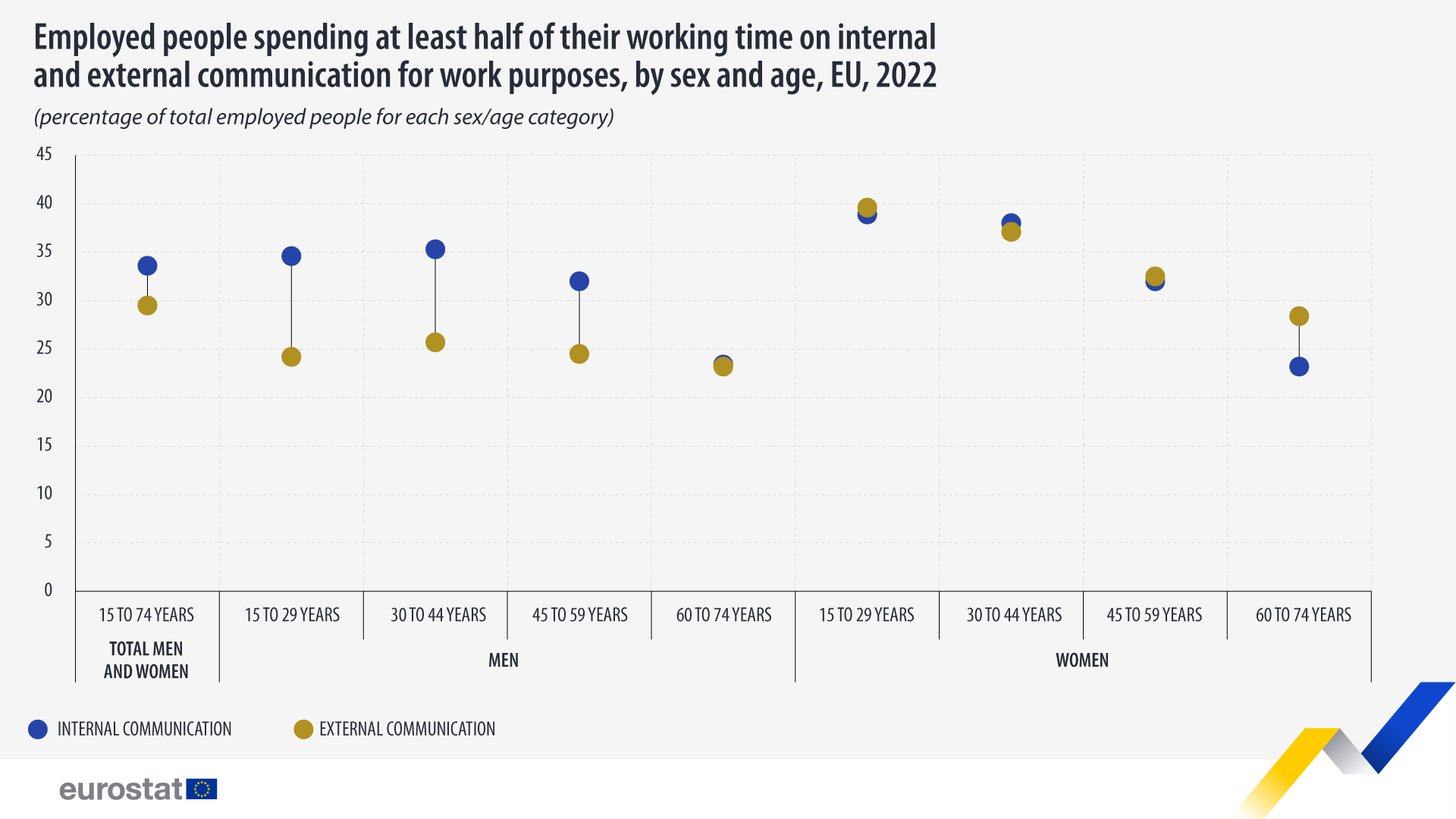
Data by economic activity (NACE Rev. 2) at the EU level show that around 55% or slightly more people employed in the ‘financial and insurance activities’, ‘education’, and ‘accommodation and food service activities’ spend at least half their working time interacting with others. On the other hand, over 40% of people employed in ‘mining and quarrying’, ‘activities of households as employers’, and ‘agriculture, forestry and fishing’ declared that they spent little or none of their working time on social interactions.
This information comes from the data release based on the 2022 EU-LFS module on job skills published by Eurostat. This article presents a handful of findings from the more detailed Statistics Explained article on employment statistics – focus on communication skills.
Communication can be internal, within the business or organisation, involving colleagues or managers, and external, to outside customers, suppliers, patients, or pupils. In the EU, 33.6% of employed people aged 15-74 years reported dedicating at least 50% of their working time to internal communication and 29.5% reported that they dedicated at least half of their time to external communication.

Source datasets: lfso_22dmsc03 and lfso_22dmsc04
Looking at the situation by sex, women reported similar shares of internal and external communication for at least half of the working time. The exceptions were those aged 60 to 74, which registered a gap of 5.2 percentage points (pp) between both categories in favour of external communication.
In contrast, men in all age groups, except those aged 60-74, had substantially higher percentages for internal communication compared with external communication. In the 15-29 age group, 34.6% of employed men dedicated at least half of their working time to internal communication, while 24.2% reported spending at least 50% of their working time on external communication. In the 30-44 age group, these shares were 35.3% vs. 25.7%, and in the 45-59 age group, it varied between 32.0% for communication within the company and 24.5% for external communication.
In general, a higher percentage of employed women, compared with men, allocated at least half of their working time to communication. The most significant difference between men and women was observed in the age group of 15-29 years, specifically in external communication, with 39.6% of women and 24.2% of men reporting to have dedicated half of their working time to external communication.
To mark the European Year of Skills, Eurostat is expanding its employment statistics by addressing questions related to interaction with other people for work purposes and how employed people allocate their working time to work-related communication.
For more information
- Statistics Explained article on employment statistics – focus on communication skills
- Thematic section on employment and unemployment (LFS)
- Database on employment and unemployment (LFS)
- Thematic section on skills
- Database on skills-related statistics
If you have any queries, please visit our contact us page.
| Zařazeno | čt 12.10.2023 11:10:00 |
|---|---|
| Zdroj | Eurostat - news |
| Originál | ec.europa.eu/eurostat/product?code=ddn-20231012-2 |
| lang | en |
| Autor | Eurostat |
